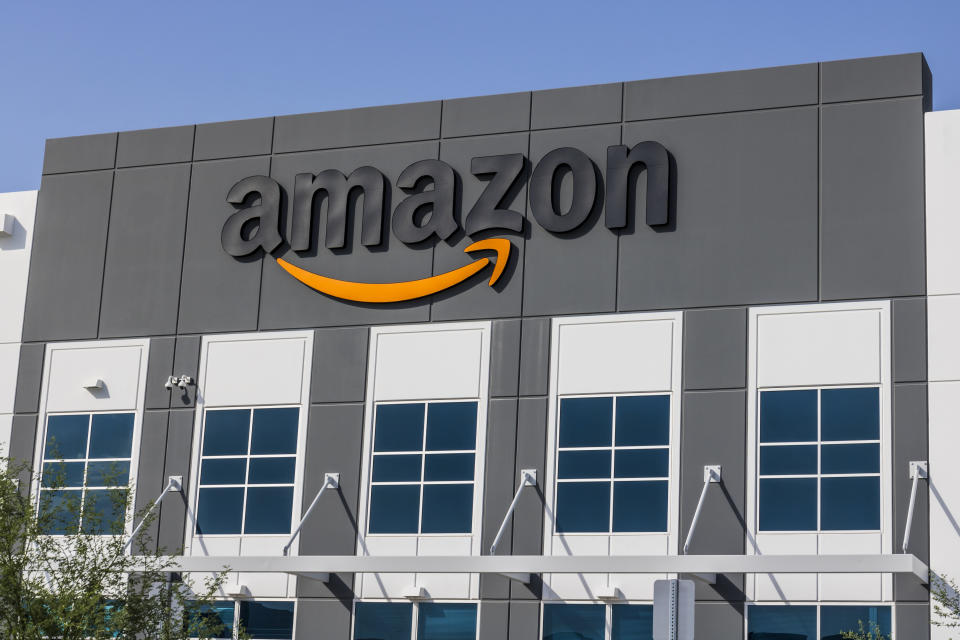How Amazon disrupts, and encourages workers to 'unleash their power': Wells Fargo
Amazon (AMZN), widely seen as a disruptive force in technology and retail, uses several key ingredients to preserve its dominance in e-commerce and help employees “unleash their power,” Wells Fargo noted on Monday.

The bank’s recent “Bricks to Clicks” digital conference in New York featured an ex-top Amazon executive, Rob Williams, who lifted the curtain on how the retail giant is able to create and maintain a “disruptive innovation culture.”
Williams, who spent 10 years as GM of global vendor management for Amazon, demystified elements of Amazon’s internal workings. He cited three key takeaways about how Amazon operates internally— which are then harnessed as part of the company’s business model.
No bureaucracy
According to the insider, Amazon hires “builders” as employees that are allowed to “‘unleash their power,’ largely by de-centralizing the decision-making process and having each division operate almost a standalone entity,” Wells Fargo noted.
The retail giant focuses in on “how to please the customer,” and then builds its strategy out from there.
“AMZN is less focused on the competition,” Wells Fargo said. “Basically, they don’t care about keeping up with what WMT, TGT and other retailers are doing as they believe that if they simply focus on the customer, they will have the best value/service proposition to the consumer, allowing them to ‘win’ in the long-term),” Wells Fargo wrote, according to the information Williams provided.
Building apparel, slowly
Amazon is slowly making inroads into clothing and footwear, Well Fargo notes, estimating that the business notched around $35 billion in sales last year. Internally, that segment is “viewed internally as more of a marathon than a sprint,” the bank noted.
“Furthermore, certain companies/categories appear to be more at-risk, while others are more insulated,” analysts wrote, adding that “the more commoditized a product is, the more likely it is to get disrupted by Amazon.”
The retailer does well selling certain “boring” products like Hanes — a brand that may be at risk given Amazon’s own private-label offerings that pop up ahead of it in search results.
“As far as businesses that are more insulated, [Williams] noted that retailers need to either ‘go high or go low’” in order to avoid getting undercut by Amazon.
“In other words, higher-end companies with premium price points have relatively less to worry about, as long as they keep distribution tight and don’t have to worry about wholesale partners ...[undercutting them] on price.
Private label loyalty
Finally, Williams noted that “in branded product, AMZN is basically just a price-matcher, but private label is used to offer value to loyal customers and Prime members.
In addition, the company “can use it as a lever to pressure brands that are holding out from selling to AMZN (i.e. they can take share by selling the “Amazon version” of a product, forcing the brand to put their goods on AMZN to compete),” the bank added.
Certain “authentic” brands like Nike — which has a strong connection with consumers — are better insulated from the Amazon disruption effect, according to Williams.
Yet “anything that’s simply ‘manufactured in China and only has marketing hype’ is at-risk from AMZN’s private-label offering,” the bank stated.
Donovan Russo is a writer for Yahoo Finance. Follow him @Donovanxrusso.
Read more:
Why Trump-Xi meeting won't produce a trade war 'breakthrough' at G20: Goldman Sachs
Trump blasts Federal Reserve as 'stubborn child' on rate policy
GrubHub stock soars as Citi cites delivery tests as a reason to buy
Follow Yahoo Finance on Twitter, Facebook, Instagram, Flipboard, LinkedIn, and reddit.
